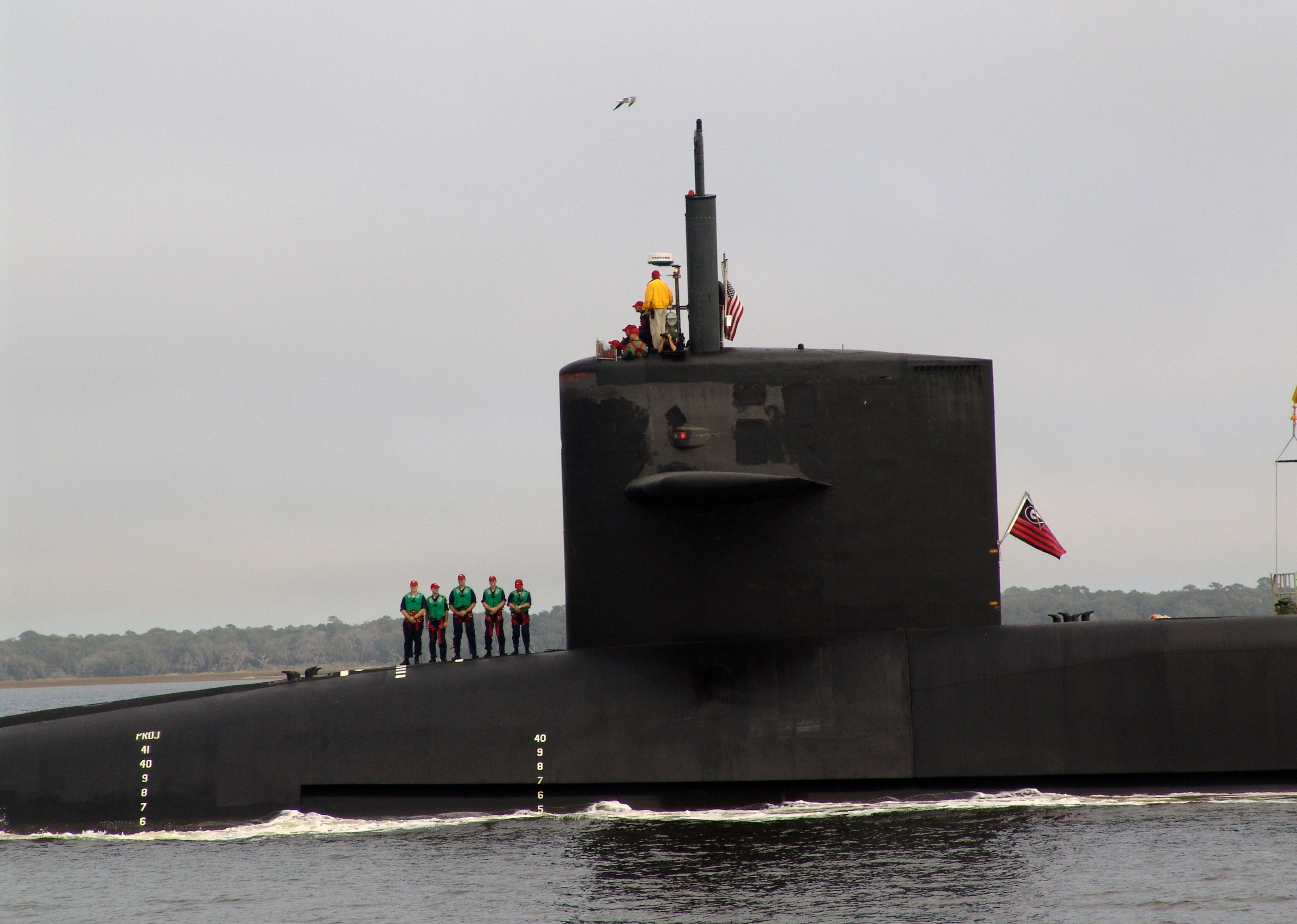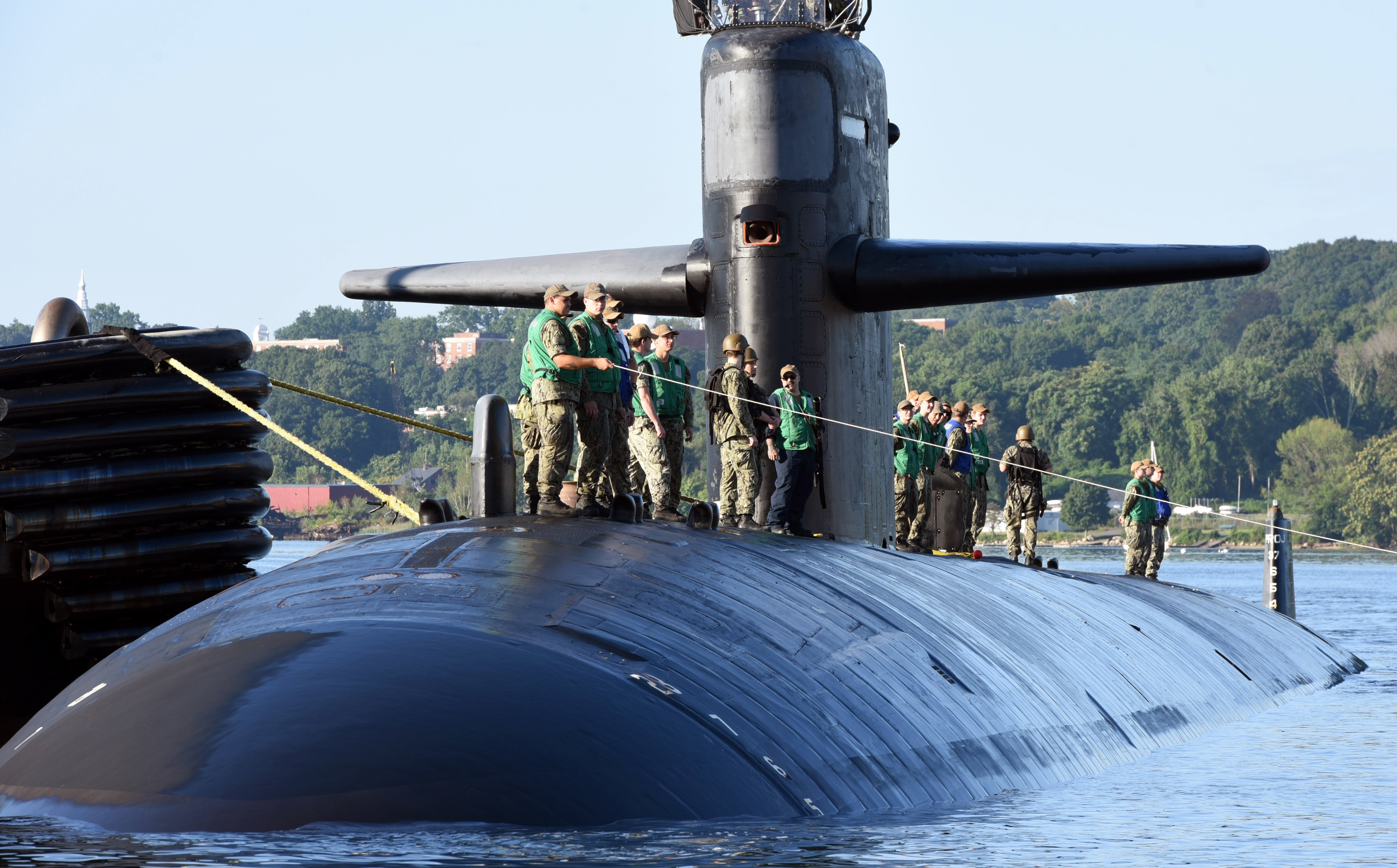Pic Of A Submarine - The Virginia class, known as the SSN-774 class, are nuclear fast attack submarines in service with the United States Navy. Designed by General Dynamics Electric Boat (EB) and Huntington Ingle Industries, the Virginia class is a new US submarine model incorporating stealth, intelligence-gathering and weapons systems technologies.
The Virginia-class submarines are designed for sea and littoral missions, such as anti-submarine warfare and intelligence-gathering operations. They were designed to replace the older Los Angeles-class submarines, many of which have been decommissioned. The Virginia-class submarines are expected to be delivered by 2043 and remain in service until at least the 2060s, with the last submarines remaining until the 2070s.
Pic Of A Submarine
The Virginia-class submarines are the US Navy's first warships to use 3D modeling technologies such as CATIA in its development, including computer-aided engineering (CAE), design (CAD), manufacturing (CAM) and product lifecycle management (PLM). ). Design problems were blamed for electric boats - and maintenance problems for the Navy.
Future Attack Submarine Uss Montana Delivered To U.s. Navy
Known as the cheapest Seofol-class submarine ($1.8 billion vs. $2.8 billion), the Virginia class was canceled after three submarines were completed. To reduce costs, Virginia-class submarines use "commercial off-the-shelf" (COTS) components, particularly their computers and data networks. Improvements in shipbuilding technology have reduced operating costs by an expected $1.8 billion in fiscal 2009.
In hearings before both the House and Senate committees, the Congressional Research Service (CRS) and expert witnesses revealed that the total revenue of the Virginia district class alone — which doubled in 2012 — would be higher operating costs, but. Lack of attack submarines
In a March 10, 2005 statement to the House Armed Services Committee, Ronald O'Rourke of CRS stated that if production rates continue as planned, economic conditions will remain in the submarine.
In 2001, Newport News Shipbuilding and General Dynamics Electric Boat Company built a quadruple version of the Virginia-class submarine, the Ledge Scale Vehicle II (LSV II) cutthroat. The vehicle was designed as an ideal testing ground for new technologies
Years Of Submarine Secrecy: India's Unique Arihant Class Is Still In Hiding
The Virginia class was built through a technical system designed to support the GD Electric Boat and Newport News Shipbuilding, the only two American shipyards capable of building nuclear submarines.
Under this arrangement, the Newport News facility built the stern, accommodation, engine room, torpedo room, sails and bow, while the electric boat built the engine room and cabin controls. Operators move the reactor plant and final assembly, testing, wear and transport
O'Rourke wrote in 2004, "Compared to the one-play plan, the methods are about two yards but offer the benefit of potential offsetting."

Among the "offsetting benefit" claims that Orke presented to the two-building proponents was that "the United States would allow submarines to continue to be built at one yard if the other wall could not sustainably build submarines." "Continuous periods of damage of any kind", including IM attacks
China's Quantum Submarine Detector Could Seal South China Sea
To reduce the cost of the ships by $2 billion in the FY-05 budget, the Navy has initiated a cost reduction program that will shave about $400 million off the cost of each ship. The program is called "2 for 4 in 12" in reference to the Navy's desire to purchase two ships for $4 billion in FY-12. Under pressure from Congress, the Navy began buying two ships a year in FY-11, meaning officials couldn't afford the $2 billion price tag before. Launched service to purchase two cruise ships per year. However, at a press conference on March 19, 2008, project manager Dave Johnson stated that the project was only $30 million away from meeting its $2 billion cost goal and would reach that goal on schedule.
For meeting four specific criteria: The Virginia-class program office received the David Packard Excelsior in Acquisition Award in 1996, 1998, 2008: reduce the cost of living; Create a more efficient, responsive and timely procurement system; business and work; and encouraging continuous process improvement
In December 2008, the Navy awarded a $14 billion contract to General Dynamics and Northrop Grumman to supply eight submarines. The contract called for delivery of one submarine in each of fiscal years 2009 and 2010 and two submarines in fiscal years 2011, 2012 and 2013.
The contract is designed to bring the Navy's Virginia-class fleet to 18 submarines. In December 2010, the US Congress passed a defense authorization bill that would increase production to two subs per year.
Uss West Virginia Visits Diego Garcia During Extended Deterrence Patrol > U.s. Strategic Command > News Article View
On June 21, 2008, the Navy commissioned USS New Hampshire, the first Block II submarine. The boat was delivered eight months ahead of schedule and $54 million over budget. Block II ships are built in four sections as compared to Block II ships in four sections This could save the fleet about $300 million, bringing the total cost down to $2 billion for the fleet and building two new boats a year. Since 2010, new submarines of this class have been equipped with a software system that can monitor and reduce their electromagnetic signatures if necessary.
In September 2010, it was discovered that the urethane tiles used in the hull to dampen interior noise and were heated before reflecting the sonar pulses were falling off the sub at sea.
Admiral Kevin McCaw announced in 2011 that the issue of mold-in-place special hull treatment had been resolved for the first ship, Minnesota, which had similar problems.

In 2013, as the beginning of two years, Congress attempted to "mandate" construction funds to the Navy by resolving the US budget cap.
Future Ballistic Missile Submarine Concept Unveiled At Russian Arms Expo
In April 2019, the Congressional Research Service (CRS) reported that the cost of the Navy's fleet was $2.8 billion.
In September 2021, CRS reported that the Navy estimated that the cost of two ships per year of continuous operation for ships equipped with the midrange portion of the Virginia Payload Module (VPM) would be $3.45 billion.
USS North Carolina, the last Block I ship, on her mission Its milestone can be seen in this picture
Because of Virginia's low production costs, the Navy created a project with DARPA to reduce the cost of attack submarines by eliminating mechanical constraints and saving shipping costs.
A U.s. Submarine Struck An Underwater Mountain Last Month, The Navy Says
The Virginia-class sub is the first class where all masts share a common design – the Universal Modular Mast (UMM) – designed by L3 KEO.
Common elements are enhanced and various design options are shared between different masts The first UMM was installed on the Los Angeles-class submarine USS Memphis.
The Virginia class was the first to use photonic sensors instead of conventional periscopes The board is equipped with advanced graphics along with an integrated set of lights and infrared sensors, infrared laser rangefinder and electronic support measurement (ESM). Two separate units of this source are mounted on two AN/BVS-1 photo masts

Which is outside the pressure box The signal from the master source is sent to the control seat via a signal generator via optical fiber data lines.
Submarine Drawing Images
The design of the first optical periscopes required them to be installed in a pressurized hull, reducing the integrity of the pressurized hull and increasing the risk of leakage, and the submarine also had to have a control room below the ship.
The implementation of photo masts (not attached to the pressure hull) allowed the submarine's cockpit to be moved to locations in the pressure hull that were not necessarily on the ship.
The view of the Court Photonics mat is very different from the normal periscope that a submarine can see, clearly visible as a Virginia-class ship. As a result, short photo masts will be replaced with low power photo cameras (LPPM) similar to conventional submarine periscopes.
In the future, a non-replaceable affordable modular panoramic photonics mast could be installed, allowing a 360° view of the sea surface.
Russia Buying Underwater Weapons As Concerns Of Nuclear Submarines Grow
Sonar on the Virginia-class submarines has an "Op Systems Architecture" (OSA) that allows for rapid installation of new hardware and software. Hardware upgrades (called technology infusions) occur every four years, while software upgrades (called advanced processor builds) occur every two years. Virginia-class submarines feature a variety of sonar configurations.
Virginia-class submarines are also equipped with a low-frequency towed sonar array and a high-frequency towed sonar array.
Both Block III submarines have two Virginia Payload Tubes (VPT), which replace single-purpose cruise missile launch tubes.

Block V submarines built from 2019 will have the Virginia Payload Module (VPM) mid-hull section, which will increase their overall length. The VPM will add four VPTs of the same diameter and height, located on the Sitterline, each carrying seven Tomahawk missiles to replace some of the capabilities lost to the SSGN.
Twitter Round Up: Israel's Ins Dragon Submarine And More
Pic of submarine, drawing of a submarine, inside of a submarine, price of a submarine, cost of a submarine, parts of a submarine, yellow submarine pic, picture of a submarine, interior of a submarine, anatomy of a submarine, images of a submarine, working of a submarine


0 Comments